
Mount Kailash ▎The Wonderful Overlap of Legend and Science
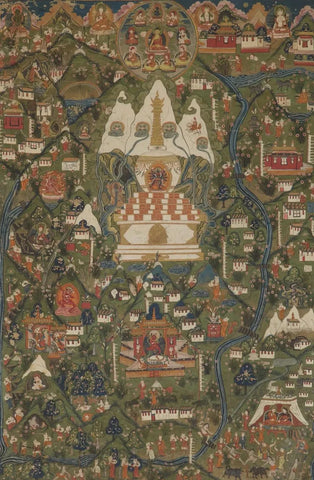
18th century, © private collection
The Tangut people say, "The roots of all mountains and rivers are in the Gangdisi." This statement aligns with the teachings of the scriptures, shining brightly with holy words. It is now understood that all mountains and rivers in the universe originate from the Gangdisi Mountains. Whether documented or not, all can be distinguished and guessed according to the map. How magnificent! —— "Comprehensive Records of the Great Qing Dynasty"
Mount Kailash, the source of rivers
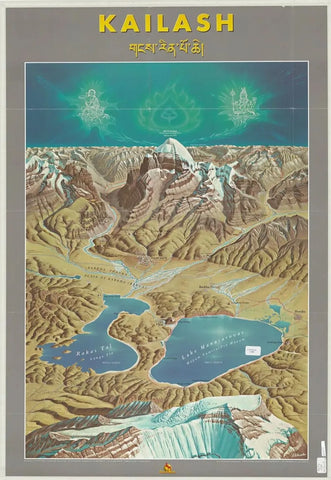
In traditional Tibetan scriptures, "Gangdise" usually refers to the second highest peak of the Gangdise Mountains, the Gang Rinpoche Peak in Pulan County of Ali Region.
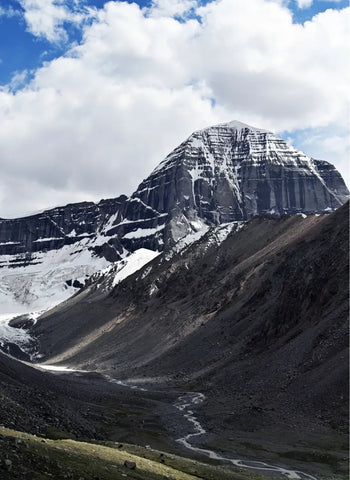
The divine cow descends to the mortal realm, realizing the sacred state.
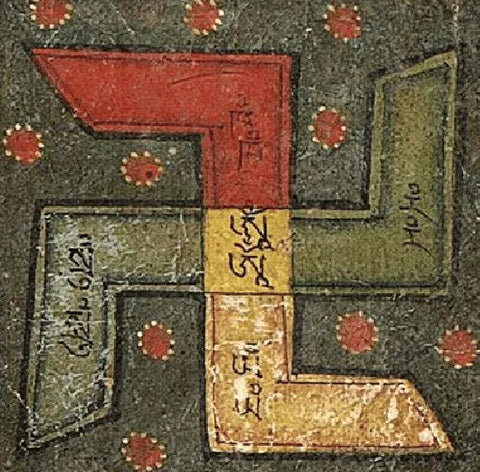
19th century, © Private Collection

Anonymous, 18th century, ©Private Collection
After countless years, Mount Kailash has become a holy place for the enlightened teachers of the Bon religion. Besides the few masters who have left a mark in history, countless unknown hermits meditate and explore the true meaning of life on this sacred mountain. The thirty-seven gathering places(འདུ་གནས), the twenty-seven sacred sites(གནས་མཆོག), the eight major burial grounds, and the endless stream of pilgrims all contribute to the belief in Mount Kailash, like a river of history that seems to have no end in sight.

18th century, ©Rubin Museum of Art
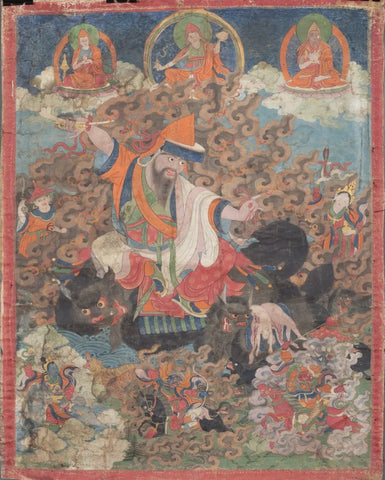
© John & Karina Stewart
After the Buddhist monks from India came to the snowy land, Bon religion was criticized as a barbaric religion of only killing and blood sacrifices. In response, the teachers of Bon religion began to construct their own paradise - Daseromolun Ren(སྟག་གཟིག་འོལ་མོ་ལུང་རིང), located in the mysterious world of Yongzhong Nine Layers Mountain in the east. O is the absence of reincarnation, Mo is fulfillment, Long is abundant blessings, and Ren is eternal compassion. Four great rivers flow from this mountain to the world.
Since then, Mount Kailash not only became the place where the divine ox descended in ancient times, but also a place that countless Bon practitioners have longed for in the future due to the existence of Yongzhong Nine Layers Mountain. They devoutly believe that by worshipping and circumambulating the sacred mountain, they can receive protection from the gods and inherit courage and strength from them.

《Mount Kailash》partial · pilgrims,
Anonymous, 18th century, ©Private collection

"Pilgrimage", photography bt Congcong, 2021
The main focus of the practice is to attain the blissful and wonderful realm.
In Buddhist scriptures, Mount Meru is regarded as the world core, consisting of the Four Treasures of gold, silver, lapis lazuli, and crystal. As one of the deities in Buddhism, Indra resides in the Trāyastriṃśa heaven on the top of Mount Meru, often discussing with other celestial beings on matters of good and evil in the world. Some Buddhist scriptures also consider Mount Kailash as the place where the Arahant disciples of the Buddha reside.
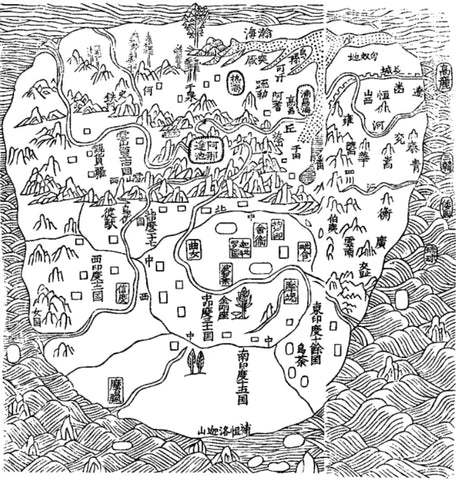
"Mandala of the Realm of Dharma", anonymous, details unknown, ©CBETA
According to the esoteric Buddhist scriptures, during the time of the debate, the Four Gods and Four Perfume-Smelling Gods occupied the eight places of empty travel in Zhanbu Island, the Four Yakshas and Four Rakshasas occupied the eight places of land policies in Gangdisi Mountain, the Four Raksasas and Four Asuras occupied the eight places underground, and the Four Non-Humans and Four Demonic Women occupied the twenty-four holy grounds and eight burial grounds. They all invited the Great Virtue God to offer worship, but he did not accept, instead he offered twenty-four stone suns as gifts.
As the spirits and gods sacrificed the Great Virtue's suns by killing, the beings in the aforementioned places became more ferocious, greedy, and vengeful, including the Gang Renpoche. Therefore, the Vajrapani Buddha residing in the Realm of Ultimate Truth had great compassion and subdued the spirits and gods of the twenty-four holy grounds with his fierce appearance, and brought the Victorious Buddha to replace the suns with twenty-four Victorious Buddha statues, transforming Gang Renpoche into a realm of the Victorious Buddha.

"Vajrapani" Thangka, anonymous,
18th century, © Private Collection
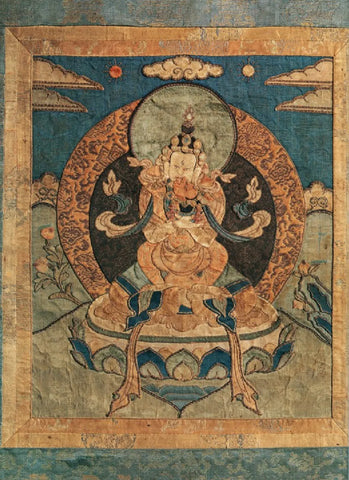
"Vajrapani" Thangka, anonymous,
19th century, © Private Collection
Countless masters of the Gelugpa sect have attained enlightenment through rigorous practice at the foot of Mount Kailash, with the story of the fierce battle between Milarepa and the Bon teacher Naropa Yongdu (ན་རོ་བོན་ཆུང)widely known. The Bon teacher believed Mount Kailash to be a sacred mountain of the Bon religion, while Milarepa believed it to be the prophesied sacred mountain of Buddha, especially designated by his guru Marpa. Through various miraculous feats such as crossing lakes and moving mountains, the two engaged in a fierce battle, ultimately ending with the defeat of the Bon teacher. As recorded in "The Life of Milarepa":
As the ruler of all mountains, Kailash, I am a wandering yogi,
The Bon teachings come to challenge, to decide victory or defeat,
Sacred teachings established in this place, mystical powers manifest,
Controlling Kailash from now on, spreading the Buddha's teachings,
This is the blessing of the Buddha, praying and offering to the wisdom sky.
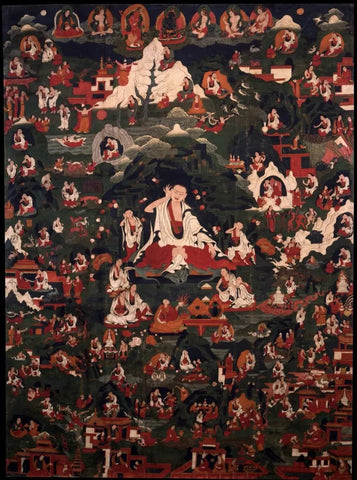
"Biography of Milarepa" Thangka, unknown artist,
18th century, ©Rubin Museum of Art

"Biography of Milarepa " Thangka Partial · Battle, Anonymous, 18th Century, ©Rubin Museum of Art
After Milarepa, his disciple Gampopa suggested that Zhigong Jundangongbu and Rinchenba send their disciples to meditate in solitude at Mount Kailash. Among the most famous disciples was Jarepa, who spent years in meditation at Mount Kailash and inherited the tradition of the Kagyu sect of practicing at the sacred mountain. Following him, his disciple Gudangwa practiced meditation at the foot of the mountain and opened up the pilgrimage route. Zhigong Jundangongbu also sent three batches of disciples to meditate at Mount Kailash, known as the three great expeditions in the history of the Kagyu sect. Many of them are said to have attained enlightenment through their meditation practice and passed away.

Milarepa fighting against a split rock, Anonymous, 2021, ©Buddhist Architecture
Discovery of Mount Kailash
As mentioned above, Mount Kailash has long been the world's core for many religions, but when did its status as the "center of the world" receive secular recognition? Following on from the previous discussion, one of the important tasks assigned to Chuo Erqin Zangbu, a monk sent on a mapping mission to Tibet, was to visit the source of rivers around the world, as recorded in the strategy for pacifying the Dzungar Khanate during the reign of Emperor Kangxi:
In the fifty-sixth year of the reign of the Emperor, he ordered the monk Chuo Erqin Zangbu Lama Jamba and the Chief Secretary of the Grand Council, Sheng Zhu, to traverse the Western Sea and the Tibetan region, measure the stars, map the terrain, and to exhaustively explore the sources of all rivers and streams.
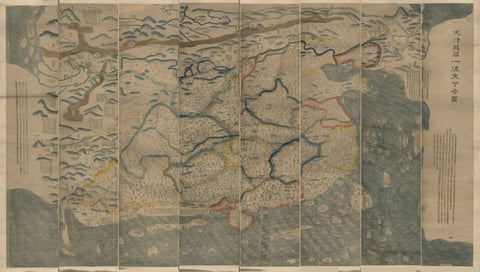
Jiaqing's "Map of the Great Qing Dynasty Unified the World Forever", painted by Huang Qianren,
1767, ©Library of Congress
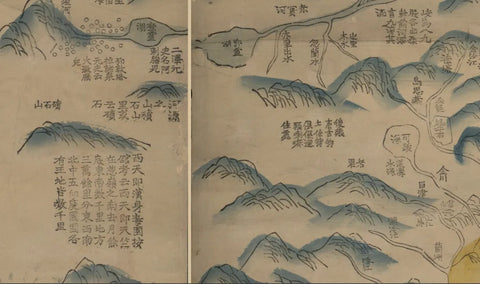
"Map of the Unified Empire of Great Qing for Ten Thousand Years" by Huang Qianren, 1767, ©Library of Congress.
Chuer Qin Zangbu and his companions not only conducted geographical surveys of the entire Tibetan region, but also successfully achieved their goal of locating the source of rivers around the world. Later, Emperor Kangxi organized court officials to study the survey results brought back by Chuer Qin Zangbu and his team from Tibet. In their discoveries, they found that the Gangdise Mountains (specifically Mount Kailash) were the source of rivers in the world at that time.

Kangxi's "Complete Map of the Imperial Territories" 15 "Map of the Gangdise Mountains and Forests",
Drawn by Lei Xiaosi and others, 1721, ©Library of Congress
According to the "Records of the Western Regions Mountains" in the "Imperial Map of the Western Regions", the mountain ranges of the earth run from west to east... According to the tradition of the main starting point of the mountain ranges, it starts from the Gangdisi Mountains in Tibet to the west and stretches more than 5,590 miles to the southwest of Xining in Shaanxi. The terrain gradually rises from the southwest to the outside and becomes higher until here. In the fifty-sixth year of the Kangxi reign of the Qing Dynasty, measurements were taken, and this place was considered the spine of the world, where the mountain ranges of the world all originate from.

"The Map of Western Mountain Ranges in Western Regions" in Volume 2 of "Illustrated Account of the Western Regions", compiled by Fu Heng and others, 1782, ©National Library of China.
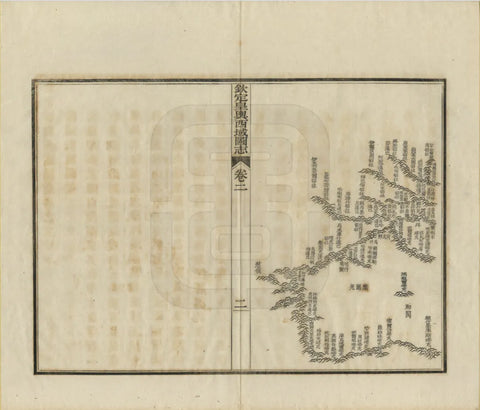
"Atlas of Western Regions" Volume two "Map of Western Regions Mountains" below,
Compiled by Fu Heng and others, 1782, ©National Library of China
The Imperial Edict of Emperor Kangxi, the center of the world.
The mapping results of Chu'er Qin Zangbu and others directly impacted the geographical cognition of the Qing Dynasty at that time, and also marked the beginning of Mount Gang Rinpoche entering the geographical cognition system of the Qing Dynasty. From then on, the status of Mount Gang Rinpoche as the center of the world and the source of rivers was officially recognized from an official perspective. Emperor Kangxi issued a special decree for this:
In the 59th year of Kangxi's reign, on the 18th day of the eleventh month, it is hereby decreed to the Grand Council, Literati, and the Nine Ministers: ...Sending envoys to the Kunlun Mountains, Western Regions, and other places, to witness and investigate the sources of the Yangtze River, Yellow River, Black River, Jinsha River, and Lancang River, and to record them on maps. Now that Tibet has been brought under control, all the various tribes on the border are being pacified, the territory of Ali in the Three Regions is included on the map. The names of mountains and rivers, differences and similarities between various tribes and the Han Chinese, should be thoroughly investigated and verified at this time, so that the information can be passed down for future generations...Tang Gu Te's naming of the Gangdise Mountains is particularly appropriate, as it is considered the root of the myriad mountains and rivers, consistent with the teachings of Buddhism...
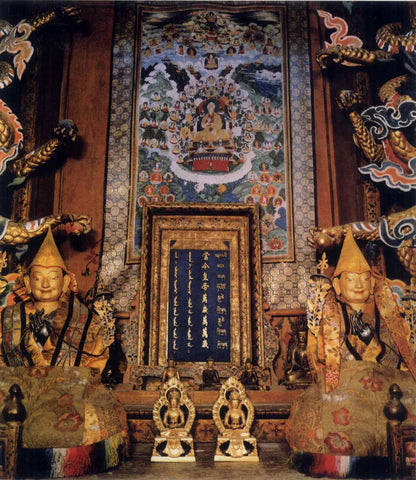
The longevity plaque of Kangxi Emperor in the Potala Palace
From "Illustrated Chronicle of Qing Dynasty III", 2001, ©The Forbidden City Publishing House
After the Emperor Kangxi's edict was included in the "Sacred Ancestor Emperor's Sacred Teachings", it became widely circulated and had a significant impact on the changing geographical views of later generations. This can be seen in numerous references in geographical works during the Qing Dynasty, and the Qing scholar Wei Yuan even wrote a special study on the Gangdisi Mountains, titled "A Study on the Gangdisi Mountains":
Qi Zhaonan's "Outline of Waterways": The mountain range winds to the east from the Gangdisi Mountains, referred to as the ancestors of the various mountains. To its west lies the Yarlung Tsangpo River, flowing westward into the Kingdom of Kashmir.
Dai Zhen's "Records of Water and Land": The current translation of the Gangdisi Mountains refers to the roots of the mountain and water system, located approximately 5,500 miles to the southwest of Xining Prefecture.

"Imperially Commissioned Illustrated Gazetteer of the Western Regions" by Emperor Qianlong, compiled by Fu Heng and others,
1782, ©Palace Museum
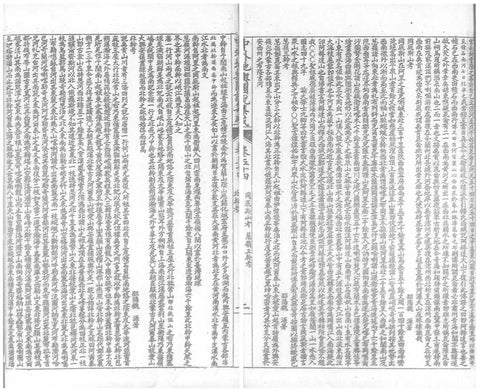
"The Study of Mount Gongdi" by Weiyuan,
1877-1897, © Institute for Research in Humanities, Kyoto University
To this day, Mount Kailash, as the world center in various religious legends, attracts countless believers to make pilgrimages, worship, and seek enlightenment and inner peace from the divine. However, what few know is that the wise and intelligent Emperor Kangxi once issued a glorious imperial edict affirming Mount Kailash as the "center of the world." From the elusive myths of deities to the undeniable imperial decree, what lies behind this is it the infiltration of faith or scientific evidence? The truth has long been lost in the river of history.
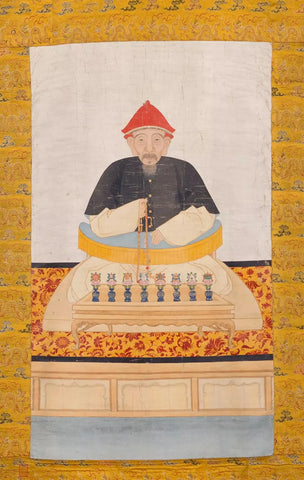
Kangxi's Late Life Praise of the Buddhist Tangka, anonymous,
author unknown, ©Palace Museum
From religious imagination to secular acceptance
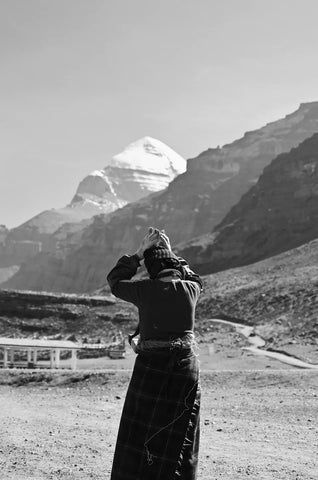
"Pilgrimage to Mount Kailash,", photography bt Congcong, 2021
